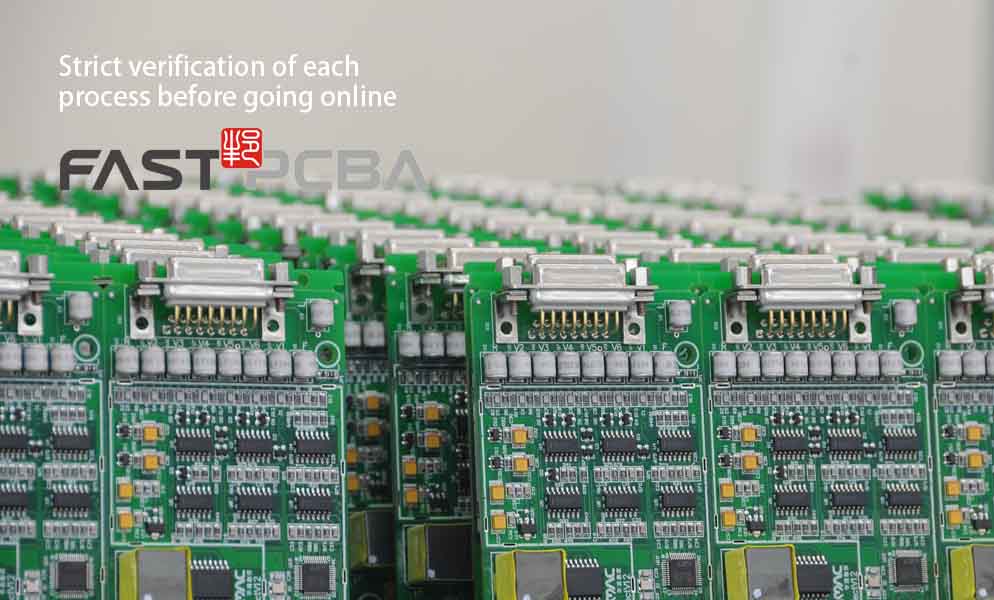About us
FASTPCBA Co.,Ltd
-
 Building 1, Senyang Electronic Technology Park, Guangming High-tech Park, Yutang Street, Guangming District, Shenzhen City.
Building 1, Senyang Electronic Technology Park, Guangming High-tech Park, Yutang Street, Guangming District, Shenzhen City.
-
 F:86-13418481618
F:86-13418481618
-
 [email protected]
[email protected]
 date:2019-12-06 10:44:25
date:2019-12-06 10:44:25
PCB manufacturing solder joint strength and connection reliability analysis
The strength and connection reliability of Pcb welding joints are related to the metallographic structure of the solder joint and the thickness of the bonding layer.

1. Evaluation of solder joint strength and connection reliability. The strength of solder joints and connection reliability mainly include two aspects: mechanical and electrochemical reliability. Evaluation of solder joint strength and connection reliability requires reliability tests. The main test content is as follows. ① Mechanical reliability test. There are mainly electrostatic damage tests, fatigue tests (thermal fatigue, mechanical fatigue), and impact tests (drop impact, vibration impact).
②Electrochemical reliability tests mainly include electrical (ion) migration, insulation resistance, and corrosion tests.The main methods are temperature cycling, thermal shock, high temperature and humidity storage, hot flashes, drops, vibration, three-point and five-point bending .
After passing the reliability test, the following inspections and tests are performed: appearance and surface inspection, solder joint strength test, and finally PCBA function test. For the appearance test, strength test and function test that are unqualified and have problems (failure), the failure mechanism should be analyzed by means of staining test, sectioning, electron microscope scanning, metallographic analysis and other means.
2. Relationship between tensile strength of solder joints and metallographic structure of solder joints in PCB manufacturing
It can be seen from the diffusion process that Cu and Sns are formed immediately after the solder is wetted to Cu when the temperature reaches 210-230 ℃, that is, it is formed at the beginning of the diffusion process. Cu and Sn are mainly formed with the increase of temperature and time, because Cu atoms penetrate (dissolve) into Cu and Sns. Studies have also reported that the voids in Cu and Ssn also affect the strength. It is conceivable that the higher the welding process temperature and the longer the time, the thicker the compound layer. If Cu and Sn also form a compound layer, the welding strength will be greatly reduced.
3.Relationship between the tensile strength of solder joints in PCB manufacturing and the thickness of intermetallic compound (IMC)
Compared with the crystalline body and solid solution of the base material and fiber material, the strength of the intermetallic compound is the weakest. Therefore, too much intermetallic compound is not good for the performance of the solder joint. The intermetallic compound has the best tensile strength when the thickness is 0.5um, and the tensile strength between 0.5 ~ 4m is acceptable. When it is less than 0.5um, the intermetallic compound is too thin and has almost no strength; when it is greater than 4um, the intermetallic compound is too thick. Compared with Cu and solder alloy on both sides, its thermal expansion coefficient is large, and the structure is loose and brittle, so It also reduces the strength. The interstices must not be free of intermetallic compounds, but not too thick. Because intermetallic compounds are relatively brittle, the thermal expansion coefficients of the substrate materials, pads, and solder joints of components are very different.
Considering that many assembly boards need to undergo double-sided reflow, and some solder joints (such as those requiring rework) are even subjected to multiple soldering, it is not recommended to use excessive high temperature for soldering, whether reflow soldering or wave soldering. At the same time, it is necessary to control the liquid phase time not to be too long, to avoid intermetallic compounds being too thick and affecting the strength of the solder joint. The ideal IMC thickness is controlled at 0.5-2.5um. Taking into account factors such as multiple welding, the optimal IMC thickness for 63Sn-37Pb solder and Cu of the base metal is usually controlled at 1.2-3.5um.
 Building 1, Senyang Electronic Technology Park, Guangming High-tech Park, Yutang Street, Guangming District, Shenzhen City.
Building 1, Senyang Electronic Technology Park, Guangming High-tech Park, Yutang Street, Guangming District, Shenzhen City.
 F:86-13418481618
F:86-13418481618
 [email protected]
[email protected]